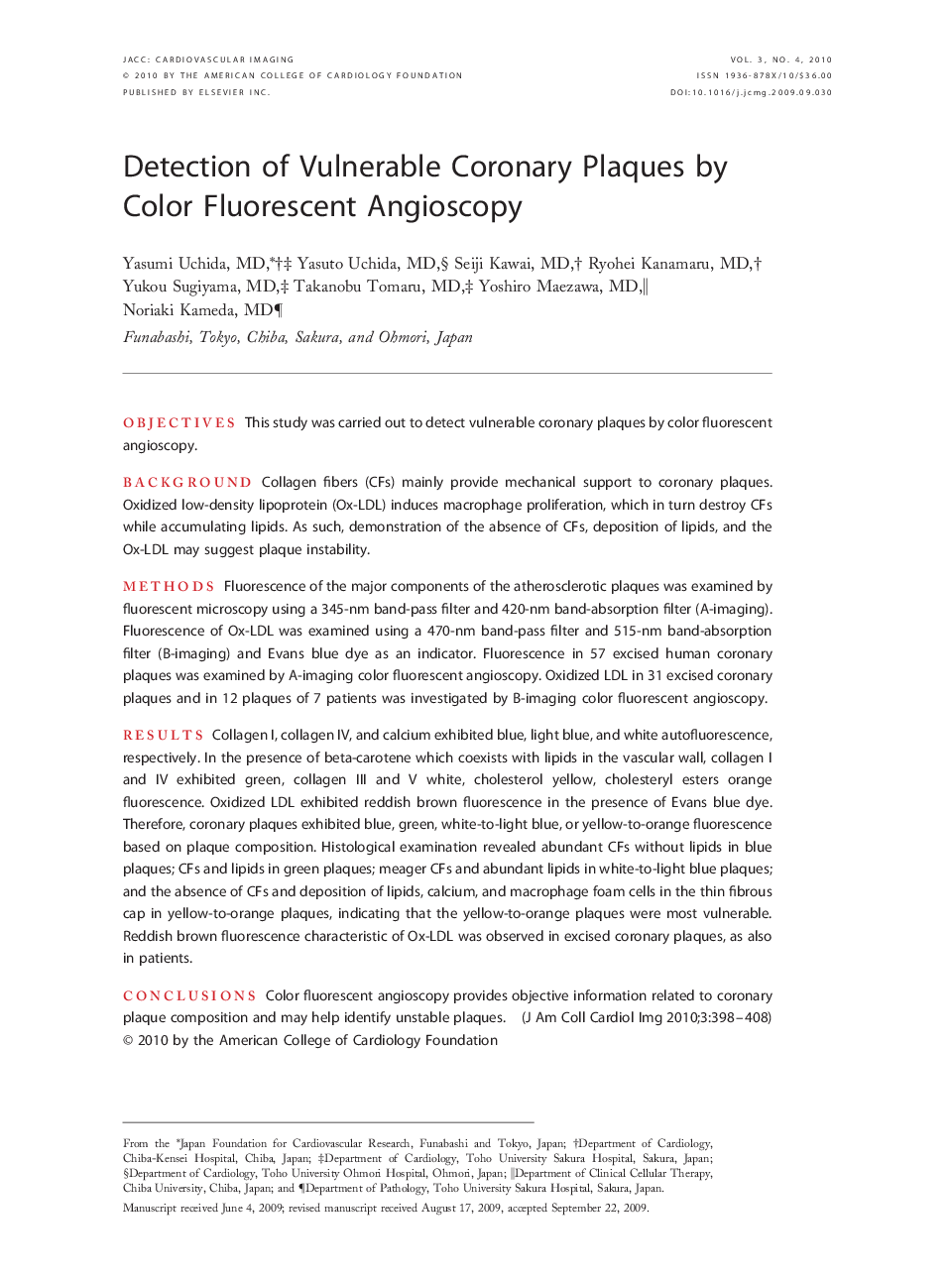| کد مقاله | کد نشریه | سال انتشار | مقاله انگلیسی | نسخه تمام متن |
|---|---|---|---|---|
| 2939271 | 1176980 | 2010 | 11 صفحه PDF | دانلود رایگان |

ObjectivesThis study was carried out to detect vulnerable coronary plaques by color fluorescent angioscopy.BackgroundCollagen fibers (CFs) mainly provide mechanical support to coronary plaques. Oxidized low-density lipoprotein (Ox-LDL) induces macrophage proliferation, which in turn destroy CFs while accumulating lipids. As such, demonstration of the absence of CFs, deposition of lipids, and the Ox-LDL may suggest plaque instability.MethodsFluorescence of the major components of the atherosclerotic plaques was examined by fluorescent microscopy using a 345-nm band-pass filter and 420-nm band-absorption filter (A-imaging). Fluorescence of Ox-LDL was examined using a 470-nm band-pass filter and 515-nm band-absorption filter (B-imaging) and Evans blue dye as an indicator. Fluorescence in 57 excised human coronary plaques was examined by A-imaging color fluorescent angioscopy. Oxidized LDL in 31 excised coronary plaques and in 12 plaques of 7 patients was investigated by B-imaging color fluorescent angioscopy.ResultsCollagen I, collagen IV, and calcium exhibited blue, light blue, and white autofluorescence, respectively. In the presence of beta-carotene which coexists with lipids in the vascular wall, collagen I and IV exhibited green, collagen III and V white, cholesterol yellow, cholesteryl esters orange fluorescence. Oxidized LDL exhibited reddish brown fluorescence in the presence of Evans blue dye. Therefore, coronary plaques exhibited blue, green, white-to-light blue, or yellow-to-orange fluorescence based on plaque composition. Histological examination revealed abundant CFs without lipids in blue plaques; CFs and lipids in green plaques; meager CFs and abundant lipids in white-to-light blue plaques; and the absence of CFs and deposition of lipids, calcium, and macrophage foam cells in the thin fibrous cap in yellow-to-orange plaques, indicating that the yellow-to-orange plaques were most vulnerable. Reddish brown fluorescence characteristic of Ox-LDL was observed in excised coronary plaques, as also in patients.ConclusionsColor fluorescent angioscopy provides objective information related to coronary plaque composition and may help identify unstable plaques.
Journal: JACC: Cardiovascular Imaging - Volume 3, Issue 4, April 2010, Pages 398–408